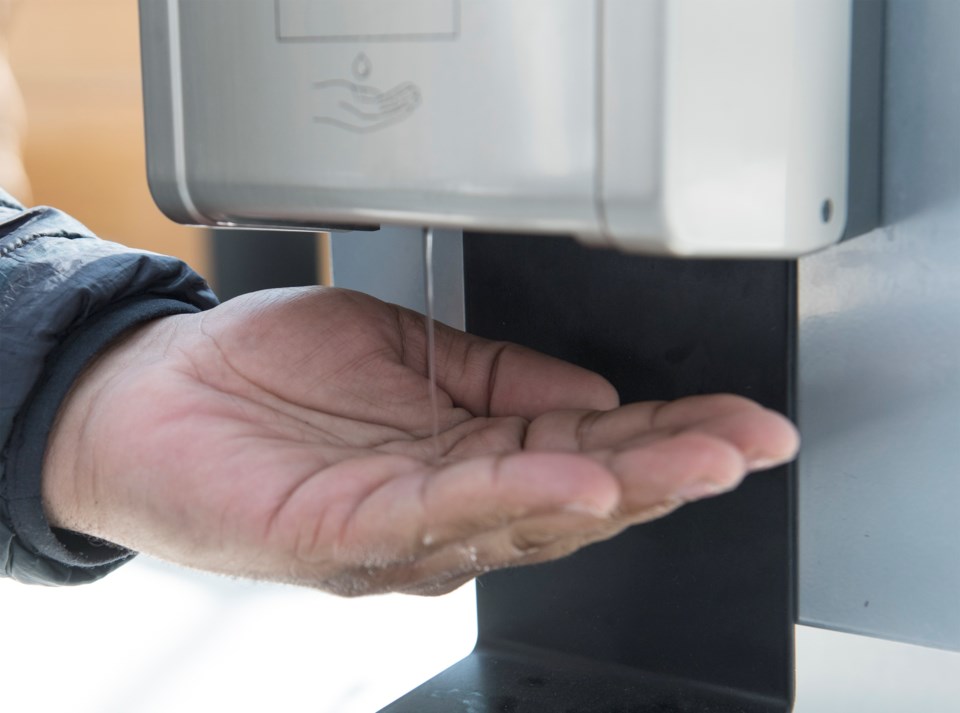Hand sanitizers have come under scrutiny lately with more than 50 brands now recalled by Health Canada, leading some to wonder about the safety of products they're using daily.
Colin Furness, an epidemiologist with the University of Toronto who specializes in hand hygiene, says hand sanitizers are still safe and effective, when made and used properly.
While quality-grade ethanol is the ingredient that makes hand sanitizers effective, there are two impurities that experts say are dangerous substitutions: methanol and ethyl acetate.
The molecular distinction between methanol and ethanol is quite small, Furness says, so it's easy to mess up during the production process if the manufacturer doesn't know what they're doing.
"Methanol and ethanol will look similar and behave similarly," he said. "The difference is one is quite dangerous."
Health Canada has a growing list of hand sanitizers that have been recalled recently. The most updated version, released Wednesday, included 51 different brands containing certain types of alcohol that are "not acceptable for use in hand sanitizers."
Most of the products in this round of recall contain ethyl acetate, which may be used in manufacturing products such as glue or nail polish removers.
Others contain methanol, which makes fuel or antifreeze.
Kelly Grindrod, an associate professor at the University of Waterloo's School of Pharmacy, says ethyl acetate and methanol can both cause skin irritations, but methanol can also lead to eye irritation and upper-respiratory irritation when it evaporates and is breathed in after being applied to the skin.
"You inhale it and it can cause irritation, headaches can also happen," Grindrod said. "So that's a problem."
There's also concern with the product being absorbed through the skin, though Grindrod said the amount would be minimal, and long-term toxicity is "more of a question mark than a known risk."
These concerns do become more important for health-care workers using the products "well over 100 times per day," rather than an average person working from home and sanitizing their hands once or twice while running errands, Grindrod said.
Dangers with hand sanitizers containing methanol or ethyl acetate can be severe if they're ingested, and the Centers for Disease Control and Prevention (CDC) released a report this week warning of serious adverse effects, including deaths, associated with swallowing methanol.
The CDC said 15 cases of methanol poisoning associated with ingesting alcohol-based hand sanitizers were reported in Arizona and New Mexico between May 1 and June 30. Four patients died.
Ethyl acetate is also toxic when ingested, Grindrod said.
Furness says it's dangerous to have alcohol-based sanitizer, even ones made with ethanol, in reach of unattended children or other vulnerable populations like inmates and patients in psychiatric facilities.
While there are alcohol-free hand sanitizer alternatives, those can be risky in other ways.
"They're not dangerous but they're ineffective," Furness said. "And that's a different kind of risk, thinking that your hands are disinfected when they're not."
Furness and Grindrod both say to look for sanitizer with at least 60 per cent ethanol, and to stay away from home-made solutions that can be unintentionally diluted, and therefore less effective.
"They may have started off with a 60 per cent ethanol, but as soon as they add in all the other stuff, they may end up with a 30 per cent and have no idea," Grindrod said.
Furness added that the right balance is tricky to find with home-made solutions, and if the alcohol in them evaporates too quickly, it won't have time to kill germs.
Canada saw an increase in companies producing hand sanitizer early in the pandemic, when demand was high and supply was low.
Early recalls resulted when non-approved technical ethanols began surfacing in sanitizers. The latest recall, however, focuses on the non-approved use of methanol and ethyl acetate.
Furness, who has done work for Gojo, the company that makes Purell, suggests sticking with recognizable brand names when purchasing sanitizer, noting a list of ingredients won't tip you off that a product is unsafe.
Sanitizers containing methanol will also smell and feel the same as ones made with ethanol, he said.
"That's why brand recognition is important."
Grindrod says to make sure the sanitizer has a natural product number (NPN) on its label. However, that's not a fail safe, as most of the recently recalled solutions also had NPNs attached to them.
"But it does mean that it's trackable," she added.
Health Canada says alcohol-based hand sanitizer should be used when soap and water is not available for proper hand-washing.
Grindrod agrees, saying sanitizers are meant for the in-between moments when you're not near a sink, and scrubbing the entire hand with soap and water for the recommended 20 seconds is effective in killing the virus.
Furness, meanwhile, worries most people don't scrub as effectively as they should when washing with soap and water, and hand sanitizer can kill bacteria without much effort.
"But we should still be washing with soap judiciously," he added.
This report by The Canadian Press was first published Aug. 7, 2020.
Melissa Couto Zuber, The Canadian Press



